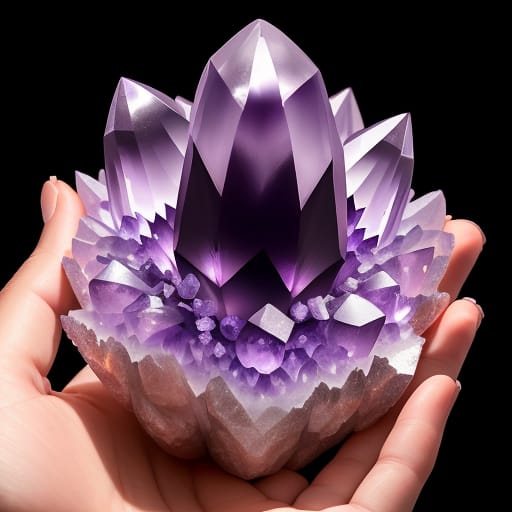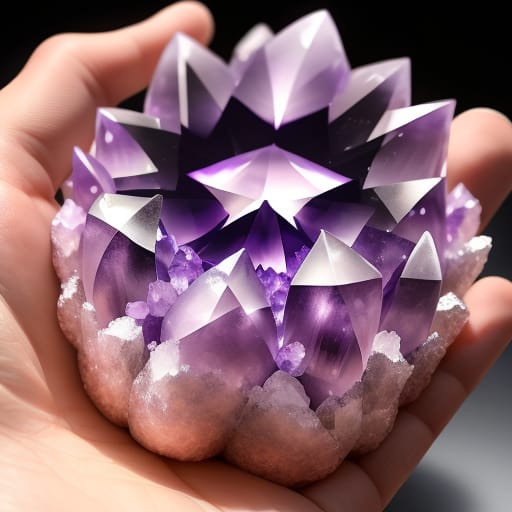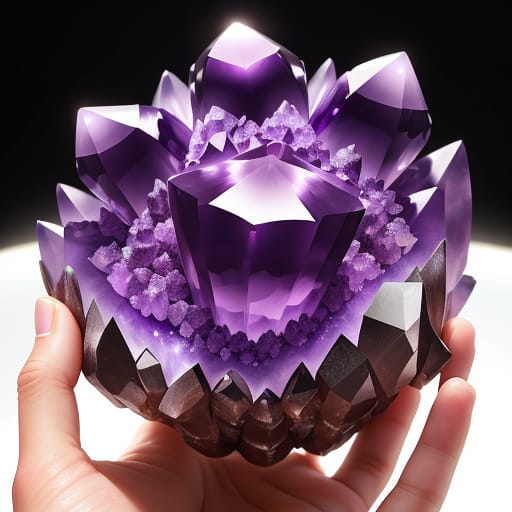Crystals are fascinating natural wonders that have intrigued humans for centuries. Found deep underground, these stunning specimens are valued for their beauty, rarity, and utility in science and industry. But what exactly are crystals, and what are the different types that exist?
In this beginner’s guide, we’ll explore the basics of crystallography, survey the major categories of crystals, discuss how they form and their properties and uses, and highlight some key facts about crystal collecting, healing, shops, and jewelry. Read on to uncover the dazzling diversity found in the world of crystals!

What is Crystallography?
Before diving into types of crystals, it helps to understand what crystallography is. Crystallography is the scientific study of crystals and their structure. More specifically, it involves analyzing the arrangement and bonding of atoms inside crystals.
Some key crystallography terms to know:
- Crystal system: The grouping crystals fall into based on their internal atomic structure. There are 7 major systems: cubic, hexagonal, trigonal, tetragonal, orthorhombic, monoclinic, and triclinic.
- Crystal lattice: The repeated orderly 3D arrangement of atoms inside a crystal. The lattice determines many properties.
- Crystal habit: The characteristic external shape that a crystal tends to form based on its internal structure. Habits include cubes, pyramids, prisms, and more.
- Crystal twinning: When two separate crystals share some of the same crystal lattice points and grow together.
By studying crystallography, scientists gain insights into the unique properties of different crystal types. Next we’ll overview the main categories of crystals that exist in nature.
Types of Crystals
There are two basic types of crystals – inorganic and organic. Let’s take a closer look at each category and some examples.
Inorganic Crystals
Inorganic crystals are made of mineral substances and do not contain carbon. They constitute the majority of crystals on Earth. Types of inorganic crystals include:
- Silicates – The most abundant crystals in the Earth’s crust. Made of silicon and oxygen. Examples are quartz, mica, asbestos.
- Carbonates – Contain carbonate (CO3). Common forms are calcite, aragonite, dolomite.
- Sulfates – Contain sulfur and oxygen. Examples are gypsum, baryte, celestine.
- Halides – Composed of halogens like chlorine, fluorine. Examples are halite, sylvite, fluorite.
- Oxides – Made of oxygen bonded to metals. Common forms are hematite, magnetite, corundum.
Organic Crystals
Organic crystals are made of crystalline organic compounds containing carbon. Types of organic crystals include:
- Amino acids – The building blocks of proteins. Glycine is a common example.
- Proteins – Important bio-molecules like insulin or lysozyme can form crystals.
- Carbohydrates – Sugars like glucose and sucrose readily crystallize.
- Lipids – Fats and fatty acids like cholesterol form crystals.
In addition, there are certain synthetic crystals grown in laboratories, like quartz, diamond, ruby and sapphire. These have important industrial uses.
Now that we’ve surveyed some major crystal types, next we’ll look at how these stunning structures form.
How Crystals Form
Crystal formation is governed by two key processes – nucleation and growth. Let’s take a closer look:
Nucleation
Nucleation is the inception stage when the first microscopic crystals (nuclei) start to form from a solution. There are two types:
- Homogeneous nucleation – Nuclei form spontaneously and randomly throughout the solution.
- Heterogeneous nucleation – Nuclei form on surfaces like vessel walls, dust particles or scratches.
Growth
Once nucleation occurs, the existing nuclei grow larger by accumulating more ions or molecules. Growth progresses as different faces of the crystal form over time. The final characteristic habit results.
Factors that affect crystal formation include:
- Temperature – Warmer temperatures speed up atom mobility.
- Pressure – Changes solubility of compounds.
- Concentration – More solute allows more crystallization.
- pH – Affects the charge of ions like in salts.
This covers the basics of how crystals originate. Next we’ll highlight some of their notable physical and chemical properties.
Crystal Properties
The unique properties of crystals derive from their underlying atomic lattice structure. Some key ones are:
Optical Properties
- Refraction – Bending light at an angle to the surface normal. Varies with crystal system.
- Birefringence – Splitting a light ray into two within the crystal due to anisotropic structure.
- Dispersion – Separating white light into colors via different refractive indices for each wavelength.
Physical Properties
- Hardness – Resistance to scratching, abrasion. Ranges from very soft talc to extremely hard diamond.
- Cleavage – Tendency to split along planar surfaces based on the crystal lattice.
- Fracture – How a crystal breaks apart non-uniformly without cleavage planes.
- Specific gravity – The density relative to water, related to composition.
Chemical Properties
- Reactivity – How readily bonds are formed or broken. Varies widely with composition.
- Solubility – Ability to dissolve in water or other solvents.
- Stability – Resistance to weathering, decomposition, and alteration over time.
The unique properties expressed by the different crystal families are what make them useful across so many domains, which we’ll explore next.

Applications and Uses of Crystals
Crystals find widespread use in industry, medicine, and common objects due to their special properties. Some prominent applications include:
Industrial Uses
- Semiconductors – Silicon and germanium crystals used to make computer chips.
- Optics – Calcite, quartz used for polarizing filters and precision lenses.
- Electronics – Quartz crystals used for oscillators, resonators, and timing devices.
- Ceramics – Clay minerals used to make pottery, bricks, cement.
Medical Uses
- X-ray crystallography – Analyze protein structures to design drugs.
- Drug development – Crystalline forms of drugs studied to enhance properties.
- Medical imaging – Scintillators made of inorganic crystals convert x-rays to visible light.
Everyday Uses
- Jewelry – Precious gemstones like diamonds, rubies, emeralds used in jewelry.
- Figurines – Lead crystal, Swarovski crystal used to make glass sculptures.
- Watches – Quartz crystals used for precise timekeeping.
This shows the far-reaching utility of crystals across modern technology and society. Next we’ll explore the alternative practice of crystal healing and some of its claimed benefits.
An Introduction to Crystal Healing
Crystal healing involves using certain crystals and gemstones to improve physical, emotional, and spiritual well-being. While not backed by science, crystal healing has long been used in traditional and alternative medicine fields.
Some crystals commonly used:
- Amethyst – Said to boost immunity and relieve stress.
- Rose quartz – Believed to improve self-love and emotional healing.
- Citrine – Thought to increase wealth and prosperity.
- Clear quartz – Considered an amplifier to boost the power of other crystals.
- Black tourmaline – Used to promote protection from negative energy.
Claimed benefits of crystal healing include reduced anxiety, enhanced energy, pain relief, inner peace, and more. However, mainstream doctors caution that there is limited evidence for the efficacy of crystal healing. More research is needed on any true physiological effects.
For those drawn to crystal healing, approaching it with an open yet skeptical mind is prudent. We’ll next explore the popular hobby of crystal collecting.
The Captivating World of Crystal Collecting
Crystal collecting involves seeking out, acquiring, and displaying different mineral crystal specimens. It is a rewarding hobby that lets you appreciate the natural beauty and variety of crystal formations.
Some coveted finds for collectors include:
- Geodes – Spherical rocks with hollow crystal interiors.
- Druses – Clusters of tiny intergrown crystals coating a surface.
- Prismatic crystals – Bipyramidal quartz crystals.
- Crystal sands – Granular particles of eroded crystals like corundum or gypsum.
Great places to find crystals are rock and mineral shops, gem shows, mines, and online vendors. Patience and persistence are needed, as special specimens can be rare.
When starting your own collection, get guidebooks to help properly identify and label your finds. Store delicate crystals safely to prevent damage. And be sure to acquire them ethically and legally.
As interest in crystals grows, a number of specialty crystal shops have emerged. We’ll highlight the offerings at some of the more popular ones.

A Glimpse into Crystal Shops
Crystal shops cater to the surging mainstream interest in crystals, offering an array of stones, jewelry, and related products. While most sales are online, some stand-alone stores exist as well.
Some of the crystals you’ll find:
- Gemstones – Diamonds, emeralds, opals used in jewelry.
- Quartz crystals – Clear or colored quartz points used for energy healing.
- Tumbled stones – Polished fragments of crystals with metaphysical meaning.
- Raw minerals – Uneven, naturally formed crystals and rocks.
Popular crystal shops include:
- Fire Mountain Gems and Beads – Sells beads, gemstones, jewelry-making supplies.
- Deepak’s Gem Palace – Indian store offering gems, necklaces, pendants.
- The Crystal Healing Shop – Sells tumbled stones, geodes, crystal jewelry.
- The Crystal Garden – Focuses on raw and polished minerals, clusters.
- The Crystal Ally – Specializes in quartz points, crystal singing bowls.
Browse options online to find a trusted shop that fits your interests and budget when exploring the world of crystals. And for those wanting to turn crystals into wearable art, crystal jewelry is a big part of the market.
Dazzling Forms: An Introduction to Crystal Jewelry
Crystal jewelry incorporates natural stones and crystals into beautiful personal adornments. The global popularity of crystal jewelry has grown enormously in recent years.
Some examples of crystal jewelry include:
- Necklaces – Delicate chains with crystal pendants.
- Bracelets – Leather or metal cuffs with crystal beads.
- Earrings – Wires or posts with dangling crystals.
- Rings – Bands decorated with colorful gemstones.
While some crystal jewelry contains expensive natural gems, more affordable options using man-made stones and crystals exist. Swarovski’s precision-cut lead glass crystal jewelry is one accessible alternative.
To create your own crystal jewelry, learn wire wrapping, beading, and other jewelry making techniques. Use findings like bails, head pins, and jump rings to assemble pieces. Some popular crystal jewelry brands to explore include Satya Jewelry, Alex and Ani, Kendra Scott, and Dogeared.
Let your inner artist shine by incorporating eye-catching crystals into handmade or purchased jewelry designs.
Conclusion
The endlessly diverse world of crystals offers so much to explore. These symmetrical natural wonders have astounded humans for millennia with their visual splendor. Yet crystals are more than just beautiful specimens – they have found indispensable use across modern industry, technology and more due to their unique properties.
While some alternative healing practices attribute mystical powers to crystals, the scientific evidence for such claims is limited. Still, collecting crystals and incorporating them into jewelry are rewarding hobbies that let you appreciate their natural perfection up close.
As you’ve seen in this beginner’s guide, there are myriad types of crystals to discover, from clustered druses to microscopic protein crystals. Get started by learning basic crystallography terminology, studying the major categories and how they form, and exploring their properties and uses. Find a specialty shop to acquire some samples or raw minerals for your own collection.
Immerse yourself in the dazzling diversity found in the world of crystals, and you’ll uncover stunning new treasures around every corner. What wondrous formations will you find on your own crystal journey?
Frequently Asked Questions
What are the main types of crystals?
The two basic types are inorganic crystals such as quartz, calcite, and halite, and organic crystals such as proteins, amino acids, lipids and carbohydrates. Synthetic crystals like ruby and silicon are also important.
How do crystals form?
Crystal formation involves nucleation when the first microscopic crystals start to grow, followed by larger crystal growth as more molecules/ions accumulate in an orderly lattice structure.
What makes crystals so useful?
The specialized optical, physical, and chemical properties of the different crystal families based on their atomic structure make them invaluable for applications in semiconductors, optics, electronics, jewelry and more.
Where can I buy crystals and crystal jewelry?
Check out specialty retailers like The Crystal Garden, The Crystal Healing Shop, Fire Mountain Gems and Beads, or Deepak’s Gem Palace to purchase raw and polished crystals, crystal pendants, crystal beads, and more.
Is crystal healing scientifically proven?
While many people believe in the beneficial energies of crystals, mainstream science has not conclusively demonstrated the physiological efficacy of crystal healing. More controlled studies are needed.